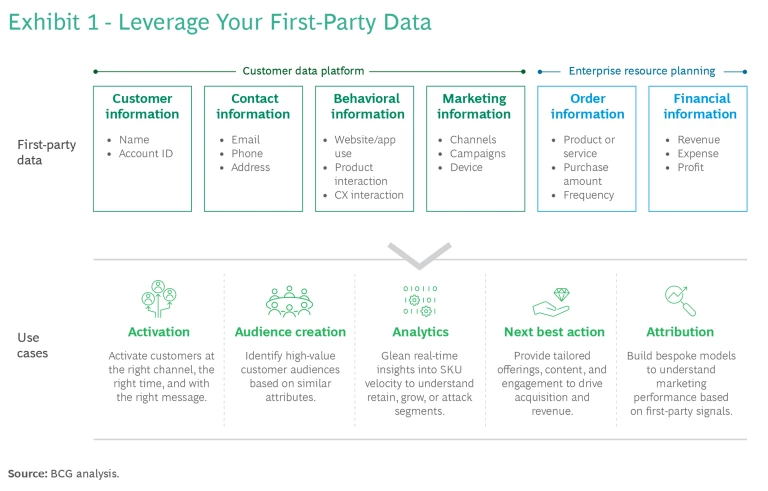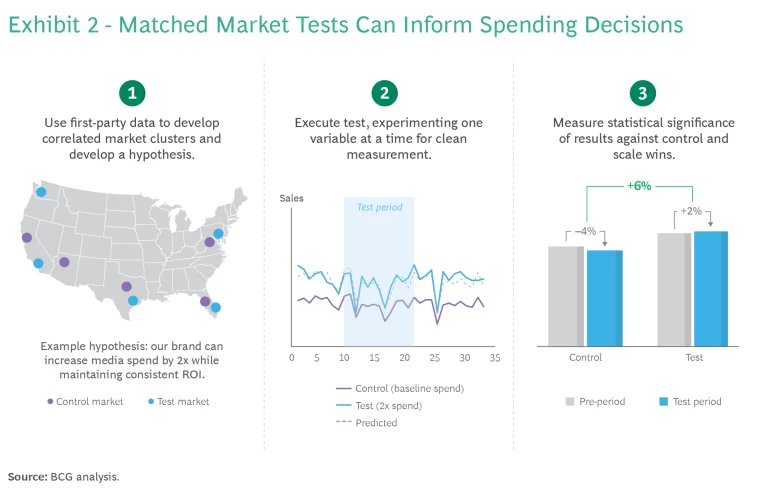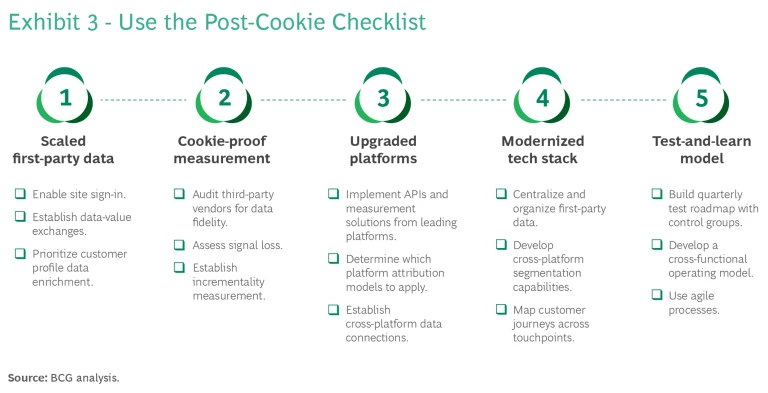The end of third-party cookies was at hand until it wasn’t. In April, Google announced that it would push back the implementation of Tracking Protection, which aims to block third parties from gathering cookie data on its platform. This is the third time that Google has delayed the sweeping change, and with these delays, businesses are starting to feel cookie fatigue, left wondering what to do and when to do it.
The So What
Although it’s easy to fall into a “wait-and-see” posture, companies should not delay their cookie-less future preparation. Despite years of notice, most companies aren’t ready for cookies to go away. Nearly 80% of programmatic ad buys centered on these third-party data elements as late as the third quarter of 2023—and many businesses are increasing the amount they’re spending this year, according to data from
But other companies are revamping how they buy media, measure performance, and collect information from their customers. These leaders are leaning into interactions that give customers value in exchange for their information and creating rich direct-to-consumer experiences in the process. While legacy cookie-dependent tactics may have a longer shelf life than initially anticipated, advertisers should forge ahead with their roadmaps, which can drive substantial value in addition to being preparative.
Brands that have successfully adapted to the cookie-less future have seen their
digital marketing
performance improve by 10% in the case of mature enterprises and up to 100% for small and medium-sized businesses, based on BCG experience.
Now What
First-party data—the information companies collect from their own audiences and channels—isn’t simply a substitute for third-party sources, it’s a superior product. And for leaders that equip their organizations, it presents a massive opportunity. Here are the steps to take now.
Maximize the first-party data you have and create value exchanges to gather more. Marketers can use the first-party data they already have resident in their enterprise resource planning (ERP) systems to begin building segment profiles. Sites should be optimized for first- party data acquisition, with enabled sign-in capabilities, quality consent capture, and various opportunities for data enrichment to develop more robust customer profiles. Marketers can then create value exchanges to deepen their data insights—offering customers discounts, free samples, event invitations, or other incentives in return for sharing personally identifiable information. (See Exhibit 1.)

Develop independent marketing performance measures. With a changing digital ecosystem, marketers will need to reassess their current measurement tech stack and develop new solutions to compensate for the weakening fidelity of current cookie-dependent attribution methods. Matched market tests, cohort-based tests, and pre/post assessments are just a few examples of effective frameworks that can measure the incremental impact of marketing tactics across online and offline channels—without reliance on third-party cookies or outside mechanisms. (See Exhibit 2.)

Baseline marketing testing can help companies assess the strength of their media tactics and navigate the changing digital ecosystem with greater confidence. Platform-native measurement solutions cannot provide the baseline analysis needed, but matched market tests can. These statistical analyses measure the incremental impact of marketing tactics across online and offline channels. And because they rely on transaction data that your organization owns, the analysis is insulated from cookie-based measurement changes.
Upgrade to the latest capabilities within large tech platforms. Marketers should update their tech capabilities in channels that have reliable measurement solutions and require consumer sign in, such as Google, Meta, TikTok, and Amazon. The latest platform solutions such as Google Analytics 4 and Meta Conversions API come with robust privacy-centric attribution models that can link digital performance to media tactics. These solutions have multiple attribution specifications, and each marketer will need to understand the model that works best for their business.
Modernize your tech stack and customer data platform (CDP). Starting with the CDP, leaders can aggregate and govern first-party data, using a roadmap to lay out the vision and ensure key operating model changes are made. They can then expand their martech stack and use case library to build audiences, retarget prospects, and activate customers across owned channels. Audience management technology is critical for understanding customer journeys and optimizing touchpoints across platforms to drive better user experiences and performance outcomes.
Embed test-and-learn ways of working. Companies need to roll out pilots and monitor performance continually to avoid stagnation. Instead of a one-and-done mindset, businesses need to approach campaigns as an ongoing test-and-learn exercise, involving cross-functional inputs to ensure implementation and value. These practices use agile teams, sprint-based pilots, and dynamic optimization to manage the post-cookie checklist. (See Exhibit 3.)

If You Do Nothing Else
Take a hard look at your media campaigns. Client assessments often reveal wasted impressions, including substantial overexposure across audiences and bidding in geographies that are out of their target footprint. Map your first-party data capabilities and understand what data you have access to now, and how it can be segmented and overlaid with your current media approaches. In tandem, build a modern compliance program to address the more stringent regulatory requirements that come from using first-party data.











